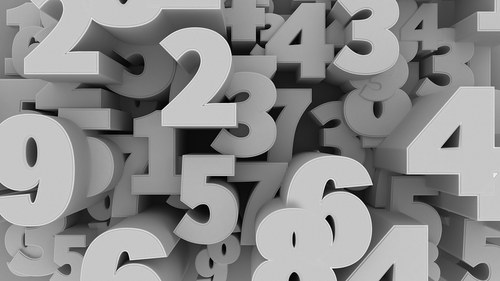In a well-run organization, leaders manage by the numbers. They measure and monitor business performance to improve results and to guide their problem-solving and decision-making. These numbers can be expressed as leading indicators (real-time) or lagging indicators (historical). A few key numbers drive the success of every company—including YOURS!

Balanced Scorecard Measures
Performance measures are often established using a tool called the Balanced Scorecard. These measures reflect a company’s current strategy and goals. Below are some commonly used measures within the four perspectives of the Balanced Scorecard. Focus on the few numbers that matter most to you, and ignore the rest (unless they later become important).
Financial Measures
Sales or Revenue
Sales growth
Gross Margin or Profit
Contribution Margin
Profit Margin
Profit or revenue per employee
Return on Investment (ROI)
Dividends
Cash flow
Days in A/R (e.g., an average of 75 days for the collection of money)
Days Held in Inventory (e.g., 90 days of stock on-hand)
Inventory Turnover Ratio (e.g., four inventory turns per year)
Current Ratio (current assets divided by current liabilities)
Quick Ratio (current assets minus inventory, divided by current liabilities)
Debt to Equity
Customer Measures
Customer satisfaction
Customer retention/loyalty/referrals
Customer complaints/customers lost
Product return rates
Response time per customer request
Customer lifetime value
Customer acquisition rate
Number of customers
Annual sales per customer/Re-order rate
Average purchase per customer
Win rate (sales closed/contracts signed)
Marketing cost as a percentage of sales
Number of ads placed/response rate/proposals made
Sales volume/per channel/per-square-foot of space
Frequency of sales transactions/mean-time between sales
Average customer size
Customers per employee
Customer service expense per customer
Process Measures
Average cost per transaction
On-time delivery/response time to customer requests
Average lead-time to ship the product
Inventory turnover
Labor utilization and effectiveness rates
Defect percentage/Rework
Break-even point
Cycle time
Warranty claims
Waste reduction
Space utilization
Frequency of returned purchases
Downtime
Employee Learning and Growth Measures
Employees with advanced degrees/participation in professional or trade associations
Training investment per employee
Average years of service
Number of cross-trained employees
Absenteeism
Employee turnover rate
Employee satisfaction
Reportable accidents/Lost-time accidents
Employee productivity
Training hours/certifications/leadership development
Personal goal achievement
Timely completion of performance appraisals
Financial Ratios
The above list will get you thinking about various ways to look at your business and measure performance. For more information, google the less-familiar terms you are interested in.
Many of the financial measures listed are lagging indicators known as business or financial ratios. They are often looked at by investors or bankers. Some of the common financial ratios are described with formulas at the following online locations:
Get everyone in your company behind the few critical numbers that drive your business strategy and goals. People should know every day how they are measuring up. Frequent feedback is a powerful motivating tool.
Related Articles:
Numbers are the Language of Business Improvement!
Measuring Your Business Processes Pays Big Dividends!
Your Clues to Uncover Weak Business Systems!
Do You Know Your Key Performance Indicators?
Learn How to Do a Business Break-even Analysis (In The Zone)
Box Theory™ Gold Measurement Tools (Box Theory™ Software screenshots)







